You need to access your evaporator coils for regular maintenance. But what if yours is inside a sealed case? How do you go about it? Don't worry; we've done the research for you, so you'll know the proper way to access the coils without damaging your HVAC system.
To access the evaporator coil in a sealed case, you just need to remove the foil tape, mastic sealant, screws, and other fasteners around the access panel. Set the hardware aside so you can put them back when you're done with your task.
Continue reading to learn more tips on how to access your encased evaporator coil safely. We'll also teach you how to clean your evaporator coil and how to find out if it is clogged. This article will also answer if you can clean the evaporator coil yourself and if cleaning really helps. Let's get to work!
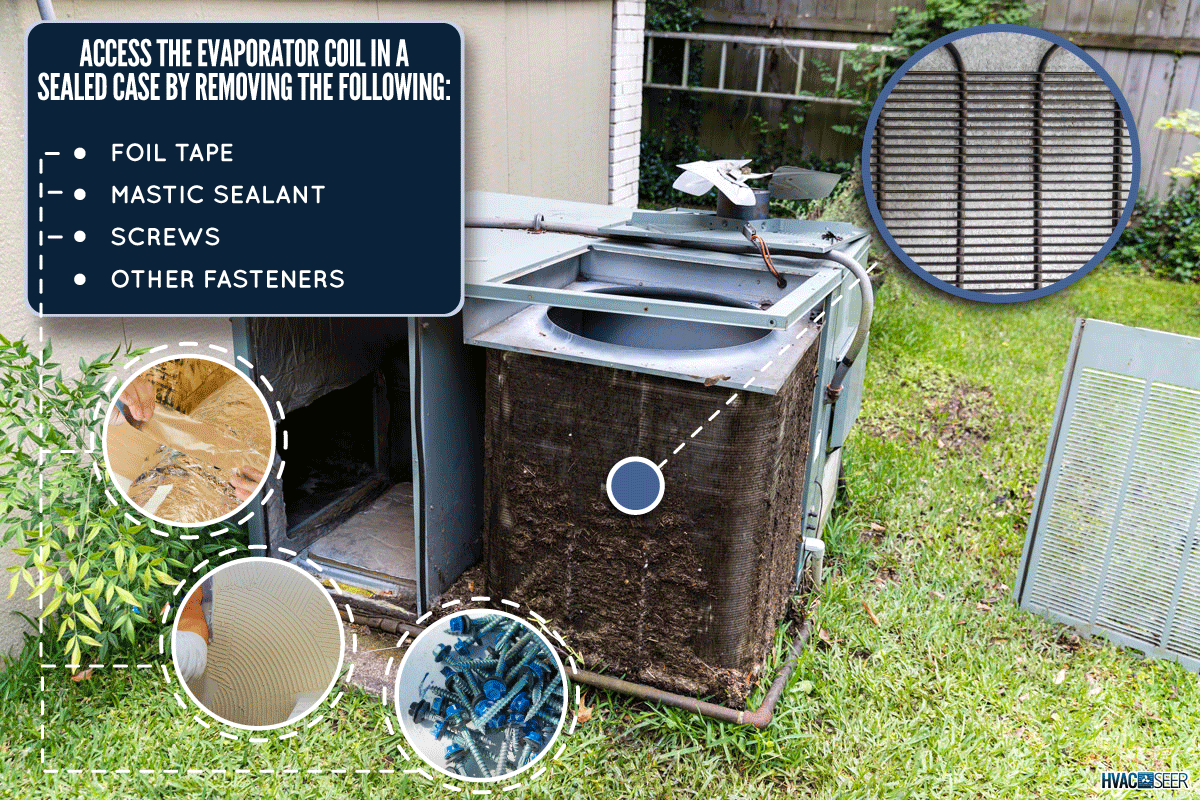
How to access the evaporator coil?
The evaporator coil is an essential part of your HVAC system. Air conditioners and heat pumps have it, and it is located at the air handler side or a panel above the furnace. It is responsible for absorbing heat and moisture from your house so that the conversion process to having cooler air can begin.
It works alongside the condenser coil, releasing warm air out of your home. With time, the evaporator coil can get dirty as contaminants cling to it. Or worse, it can develop mold and bacteria.
When this happens, it'll not only affect the performance of your evaporator coil, but the quality of your indoor air will also suffer. As a result, your HVAC system:
- has to work harder to provide you with a comfortable temperature
- components are subject to faster wear and tear
- energy costs will be higher
- will recirculate air contaminated with dirt, mold, and bacteria, making you and your family members sick
That's why it is very important to check on this component from time to time as part of your HVAC system's regular maintenance. Or when you notice that your HVAC isn't performing at its best, the evaporator coil is one of the components that you need to inspect to determine its condition.
For some air conditioning units and heaters, it is easy enough to access the evaporator coil. But there are some units wherein this component is encased in a sealed compartment which makes reaching it a little complicated. Nevertheless, it can still be done.
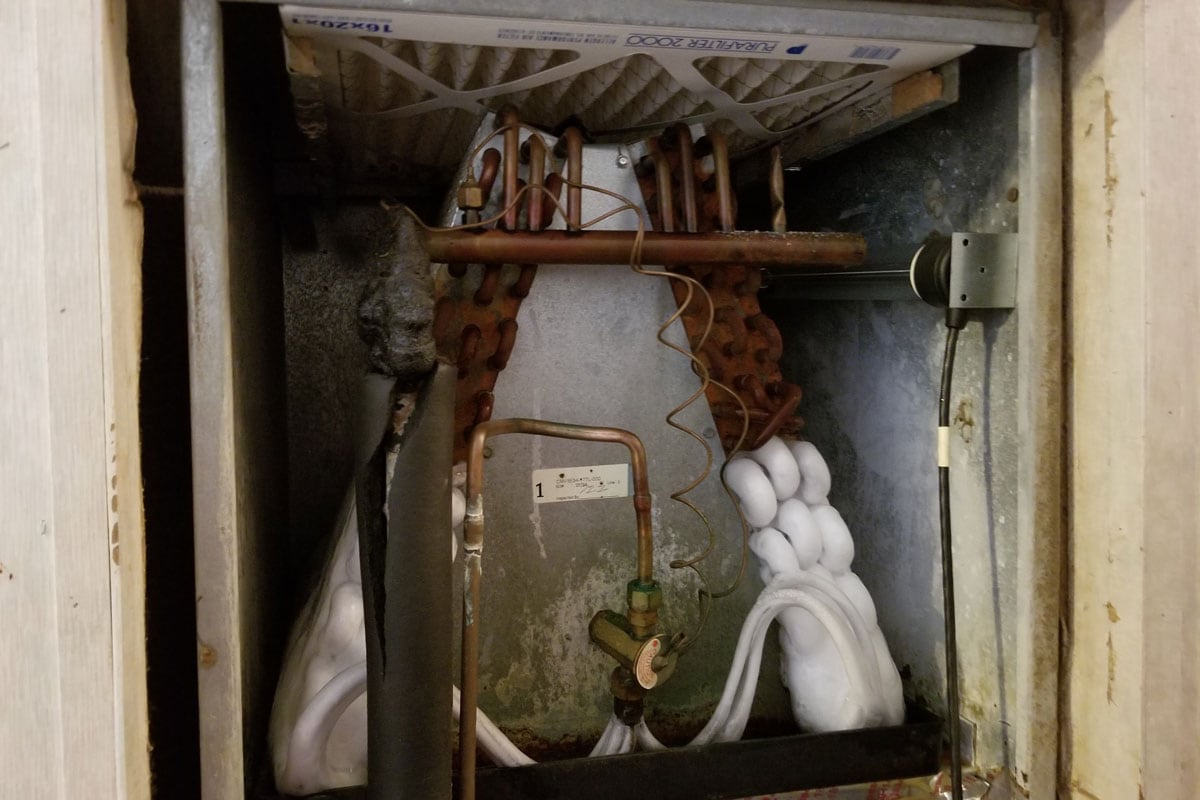
How to Remove the Evaporator Coil's Access Panel
- Turn off your HVAC system and switch it off from the circuit breaker.
- Check your owner's manual to know the location of your evaporator coil.
- Wear safety gloves and goggles.
- Locate the access panel to the evaporator coil.
- Take off the foil tape and mastic sealant around it if there's any.
- Remove the screws and other fasteners that are keeping it sealed.
- Keep them inside a zipper storage bag for safekeeping.
- Take off the access panel and set it aside.
That's it! You've now accessed the evaporator coil to do what you need to do about it.
Cleaning the Evaporator Coil
If you wish to proceed to clean this component, here's what you need to do now that the access panel has been removed.
- If you're using a coil cleaner, spray the foam on the evaporator coil. If you're using a compressed air canister, blow air into the exterior surface of the evaporator coil.
- Let the evaporator coil absorb the cleaner for some time. This will help loosen the dirt and grime on its surface.
- Pour water over the coil to rinse off the dirt. Don't worry because the water will drain into the pan.
- Repeat the steps above, if necessary, until the evaporator coil is clean.
- Wipe the outer surface of the evaporator coil.
- Reattach the access panel. Make sure the screws are fastened properly to secure the panel in its place.
- Put new mastic and foil tape if necessary.
Check out this mastic tape compound on Amazon.
If the water doesn't drain out of the HVAC system, it indicates that there's a blockage in the drain pan or pipe. Call an HVAC specialist to have a look at it and remove the cause of the blockage. Do the same thing when you notice mold and bacteria in your evaporator coil. Ask a specialist to have it inspected and treated with biocide.
Can I clean my evaporator coil myself?
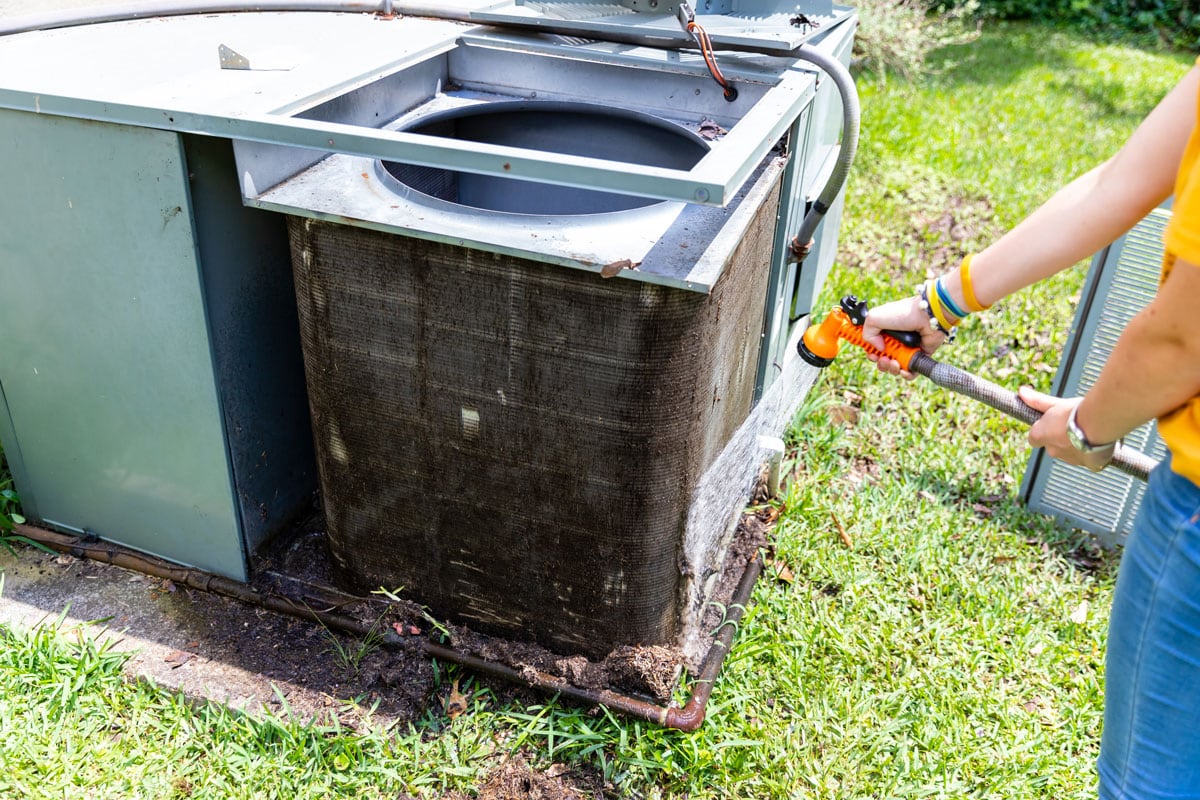
As discussed above, you can clean the evaporator coil yourself as long as you feel comfortable about using tools to access this component. As a safety measure, you are advised to always switch off your HVAC system, and wear gloves and safety glasses at all times.
Some also prefer to use a handheld vacuum when cleaning the evaporator coil's surface. This will help them get rid of the loose dirt first before they get down to remove any stubborn grime and gunk. You can also use a soft brush to clean hard-to-remove dirt.
If you don't have compressed air, evaporator coil cleaner, or any commercial cleaner, you can just mix warm water with a mild liquid detergent. Put the soapy solution in a spray bottle for easy application.
Click this link to find this evaporator coil cleaner on Amazon.
You should also be extra careful since you're dealing with a complex appliance here. You don't want to cause more harm to your HVAC system with whatever you do.
If you don't feel up to the task, it is always a good idea to call the help of your trusted HVAC specialist, who will know exactly what to do with your evaporator coil.
How do I know if my evaporator coil is clogged?

Since the evaporator is inside the air conditioning unit or heat pump, you don't really get to see its condition all the time. Even so, here are some telltale signs that should prompt you to take a look at this component.
Insufficient Cooling
If you're not satisfied with how your HVAC system cools your home, it might be a sign that your evaporator coil is clogged with dirt. It means that it is no longer efficiently removing warm air out of your indoor air so that it can be transferred outside of your house.
When your evaporator coil is dirty, it cannot perform its function effectively because it is clogged with dirt.
Longer HVAC Running Time
Having a clogged evaporator coil means it won't operate at its top performance. As such, it takes your HVAC system a long time before your desired indoor temperature is reached. This means that your HVAC is running longer than before and working harder to make you feel more comfortable at home.
As a consequence, the entire unit gets worn out faster, and you'll have higher energy costs.
Frozen Evaporator Coil
A dirty evaporator coil will restrict its ability to absorb heat. In turn, condensation can happen on its outer surface, and the water droplets can freeze. Be careful because this can damage your entire cooling system and can lead to its breakdown. In the end, your HVAC won't be able to function at all.
These are just some of the symptoms that you need to watch out for so that you can prevent the adverse effects of having a clogged evaporator coil on your cooling system.
Does cleaning AC coils really help?
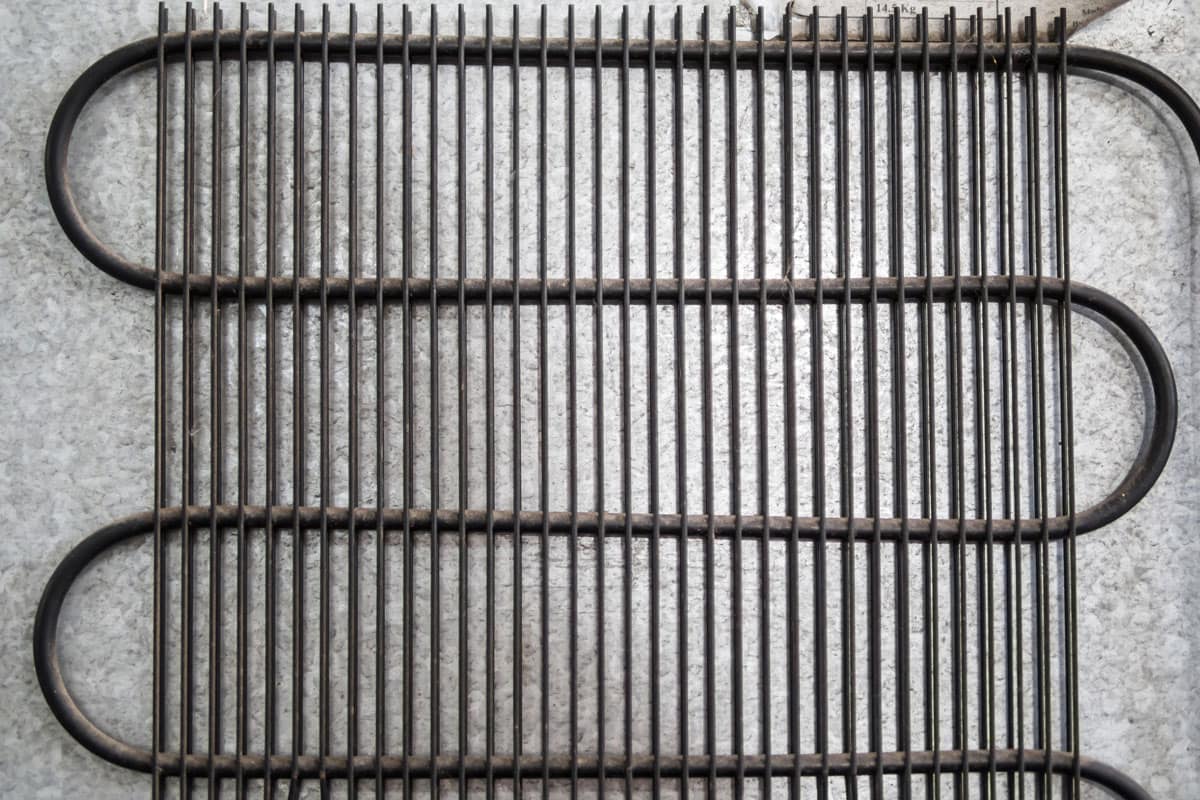
Admittedly, it takes some effort to access an evaporator coil in a sealed case. You might be asking yourself if all the effort is worth it.
Cleaning your evaporator coil is a crucial part of your HVAC system's routine maintenance. This is needed to keep your cooling unit in top shape all the time. You will benefit from this by extending the life of your HVAC unit, having an efficient cooling system, lowering your energy consumption, and improving your indoor air quality.
You can have it scheduled at least once a year, especially after it has worked so much during the hot summer months. But you can have it cleaned more frequently when you have an older unit or if you live on a busy street with a higher exposure to air contaminants.
Final Thoughts
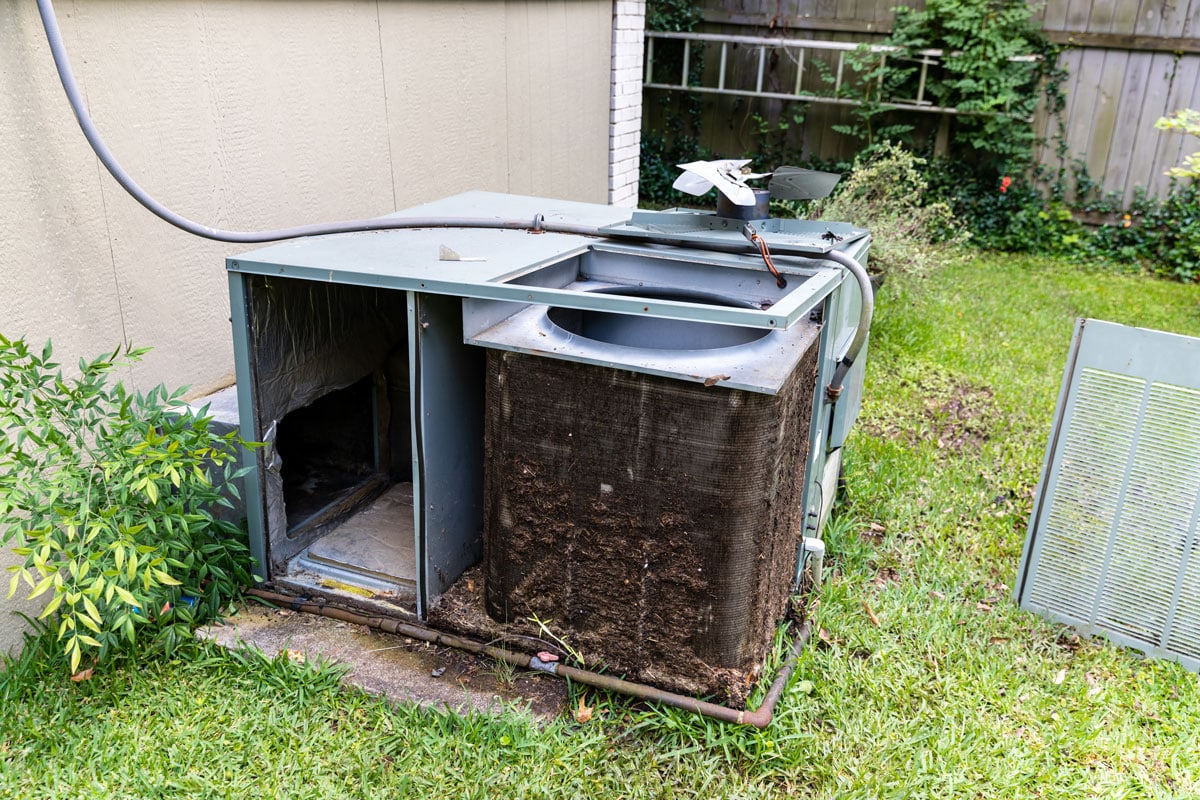
To access a sealed evaporator coil, you need to carefully remove the attachments on the access panel. This includes the sealant, tape, screws, and other fasteners used to enclose the evaporator coil. Just make sure you keep the small hardware safe so that you can put the access panel back when you're done cleaning or inspecting your evaporator coil.
You may also visit the following posts for some related reading:


